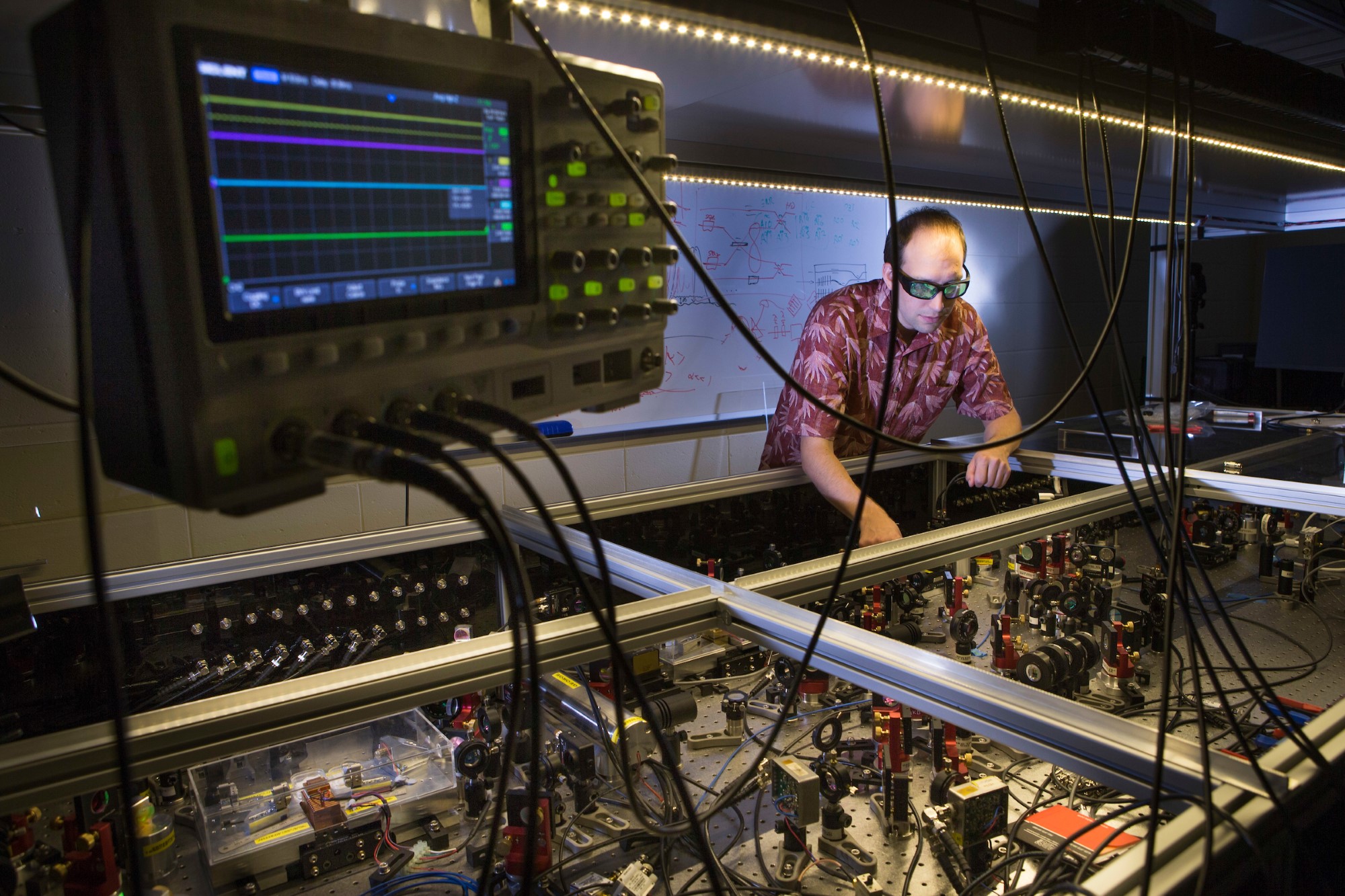
Research projects
Discover the forefront of astronomy and astrophysics through our projects, ranging from deep-space communication systems to groundbreaking adaptive optics. Explore our diverse, ongoing research initiatives shaping the future of space science.
Displaying 1 - 15 of 18 project(s).
This project has two components: developing the science case for the instrument, defining the mission parameters that are necessary to ensure the science goals are achieved; and, for a student so inclined, physically building the telescope and camera system.
Theme
- Instrumentation
- Stellar and planetary astronomy
- Structure and evolution of the Cosmos
Student intake
Open for Bachelor, Honours, PhD students
People
- Associate Professor Bradley Tucker, Supervisor
- Dr Joice Mathew, Supervisor
This project has two components: developing the science case for the instrument, defining the mission parameters that are necessary to ensure the science goals are achieved; and, for a student so inclined, physically building the telescope and camera system.
Theme
- Instrumentation
- Stellar and planetary astronomy
- Structure and evolution of the Cosmos
Student intake
Open for Bachelor, Honours, PhD students
People
- Associate Professor Bradley Tucker, Supervisor
- Dr Joice Mathew, Supervisor
Ambitious students will investigate optimal ways to measure the stellar properties (eg Teff, age, mass) and chemical composition of this immense amount of data.
Theme
- Galactic archaeology
- Stellar and planetary astronomy
Study of the statistics of turbulent, magnetised gases, relevant for the structure and evolution of the interstellar medium, the formation and evolution of stars and galaxies, using a combination of supercomputer simulations, theory, analytical calculations, and comparison to observations.
Theme
- Stellar and planetary astronomy
- Structure and evolution of the Cosmos
Student intake
Open for Bachelor, Honours, PhD students
Observatory
People
- Professor Christoph Federrath, Supervisor
The goal of this project is to make predictions for the observable gamma-ray signatures of different plasma physics models for cosmic ray transport.
Theme
- Stellar and planetary astronomy
- Structure and evolution of the Cosmos
Ultraviolet photometry has revealed that young open clusters in the Milky Way display extended main sequence turn-off in the colour magnitude diagram.
Theme
- Galactic archaeology
- Stellar and planetary astronomy
Student intake
Open for Bachelor, Honours students
People
- Associate Professor Luca Casagrande, Supervisor
In this project you will develop use and further develop the Chronostar tool to identify thousands of previously unknown young stars near the sun - ideal targets for future exoplanet detection campaigns.
Theme
- Stellar and planetary astronomy
In this project you will develop use and further develop the Chronostar tool to identify thousands of previously unknown young stars near the sun - ideal targets for future exoplanet detection campaigns.
Theme
- Stellar and planetary astronomy
Accreted stellar populations are comprised of the remnants of destroyed galaxies, and often dominate the 'stellar haloes' of galaxies such as the Milky Way.
Theme
- Galactic archaeology
- Stellar and planetary astronomy
Student intake
Open for Bachelor, Honours students
People
- Associate Professor Luca Casagrande, Supervisor
The SkyMapper Transient (SMT) Survey is a currently searching and studying supernovae and other transient sources in southern sky.
Theme
- Stellar and planetary astronomy
The goal of this project is to build a software pipeline that can take simulations of galactic winds, such as the one shown in the figure, and make simulated observational images from them that can be compared directly to telescopic data.
Theme
- Stellar and planetary astronomy
- Structure and evolution of the Cosmos
The effective temperature is one of the most fundamental parameters of a star, and its precise determination is crucial for a number of purposes, e.g., from measuring chemical abundances and ages, to improving stellar and atmosphere models.
Theme
- Galactic archaeology
- Stellar and planetary astronomy
M dwarfs are the most abundant stars in the universe, and prime targets for detecting Earth-like planets.
Theme
- Galactic archaeology
- Stellar and planetary astronomy
We are looking for ambitious students keen to join the project. They can be involved in different aspects, both observational and theoretical/computational
Theme
- Galactic archaeology
- Stellar and planetary astronomy
Blue stragglers are main-sequence stars that are more luminous and bluer than stars of the same age, and their existence has long defied standard stellar evolution.
Theme
- Galactic archaeology
- Stellar and planetary astronomy
Student intake
Open for Bachelor, Honours students
People
- Associate Professor Luca Casagrande, Supervisor
